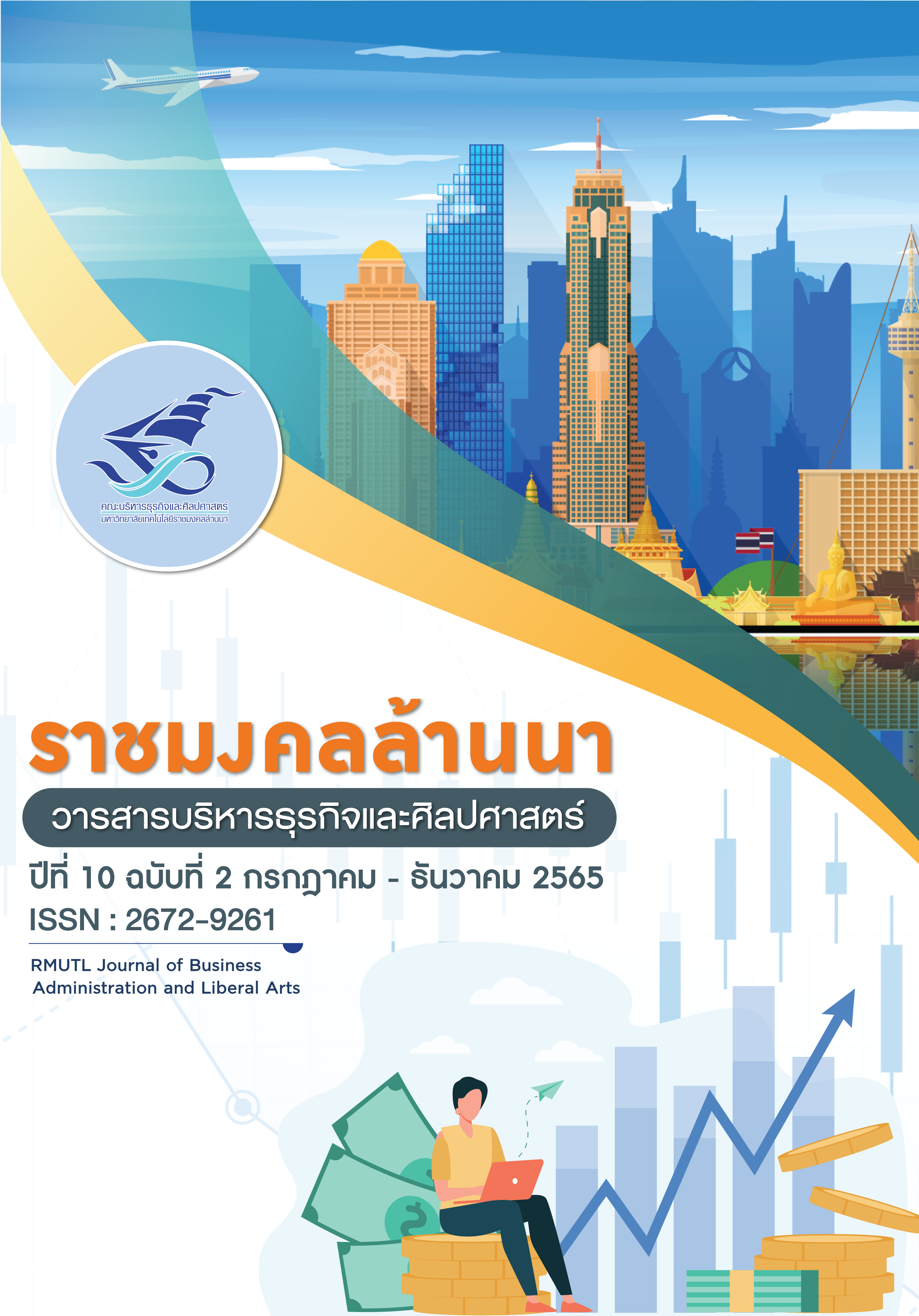Supply Chain Management for Safety Agricultural Products of Chiang Mai Social Enterprise Corporation
Main Article Content
Abstract
The study on "Chain Management of Safe Agricultural Products Supply by Chiang Mai Social Enterprises Company Limited" aimed to study the patterns and characteristics of management, connectivity and supply chain relationships, and problems and obstacles arising in the supply chain of safe agricultural products by Chiang Mai Social Enterprises Company Limited. The population included 33 households of the agriculture group at Ban Mae Khimuk, Ban Tub sub-district, Mae Chaem district in Chiang Mai province, Chiang Mai Social Enterprises Company Limited, and Thai Organic Agricultural Innovation Foundation. This study was qualitative research by studying the concepts of related theories and research papers. Then, they were applied to create an in-depth interview form. The information was gathered through interviews, observations, and focus groups. Then, the researcher applied the content analysis method. Furthermore, the descriptive method was used to present the data. For the data obtained from the interview, they were described by the analytic induction. Finally, they were compiled and classified systematically.
The study's results revealed that the interviewees' population was comprised of 28 males and five females. Most were 61 years of age or older, with 19 cases representing 57.58%. Their occupation was secondary to agriculture, which was the weaving of 16 household members, accounting for 48.48 percent. There were 12 interviewees with the most land holdings of 21 rai or more, accounting for 36.36 percent. The qualitative study results indicated that the management and relationships at the safe agricultural supply chain level were consistent with the SCOR model. It consisted of Plan with the adoption of the contract farming system to adapt to the community; Source with the procurement from a quota to each product aggregator, considering the order quantity from the capacity of production capacity; Make which the product aggregator will assign farmers in the network produce products for getting the quantity that the company needs; Delivery which the products are sorted out by different sizes initially and delivered to the company to check the standards before packing the produce into sacks and Return. Even at the outset of the study, there is no merchandise return from the purchaser; there are preparations or guarantees for products that customers or consumers will select that the aggregator ships with quality. As for the problems and obstacles of the primary management, they mainly arose from the factors of farmers and the body of management knowledge related to the farmers.
Article Details

This work is licensed under a Creative Commons Attribution-NonCommercial-NoDerivatives 4.0 International License.
บทความวิจัยนี้เป็นของลิขสิทธิ์
References
กาญจนา สมมิตร. (2557). สถานการณ์ธุรกิจเพื่อสังคมภายใต้บริบททุนทางสังคมในอำเภอหางดง จังหวัดเชียงใหม่. วารสารวิชาการมหาวิทยาลัยฟาอิสเทอร์น, 7(2), 120-131.
ณัฐพล บัวเปลี่ยนสี. (2561). การจัดการห่วงโซ่อุปทานของสินค้าผักเบอร์ 8 เพื่อยกระดับศักยภาพของกลุ่มเกษตรกรในอำเภอพนมสารคาม จังหวัดฉะเชิงเทรา. วารสารวิชาการ มหาวิทยาลัยหอการค้าไทย มนุษยศาสตร์และสังคมศาสตร์, 38(4), 52-65.
พลอยพิม ศัลยพงษ์. (2550). การปรับปรุงประสิทธิภาพกระบวนการผลิตโดยใช้แนวคิดของการจัดการโซ่อุปทานสำหรับอุตสาหกรรมผลิตภัณฑ์จากผึ้ง. (วิทยานิพนธ์ปริญญามหาบัณฑิต สาขาวิชาวิศวกรรมอุตสาหการ) เชียงใหม่: มหาวิทยาลัยเชียงใหม่.
สุธาทิพย์ เลิศวิวัฒน์ชัยพร. (2561). การบริหารจัดการโลจิสติกส์และโซ่อุปทานให้กับเกษตรกรชาวนาแห้ว จังหวัดสุพรรณบุรี.(งานวิจัย) กรุงเทพฯ: สำนักงานกองทุนสนับสนุนการวิจัย (สกว.).
เรืองเดช วงศ์หล้า และคณะ. (2556). โครงการศึกษาและพัฒนาระบบการจัดการธุรกิจเกษตร: มหาวิทยาลัยราชภัฏอุตรดิตถ์กับเครือข่ายเกษตรกร องค์กรท้องถิ่นจังหวัดอุตรดิตถ์และภาคี. (งานวิจัย) กรุงเทพ : สำนักงานกองทุนสนับสนุนการวิจัย (สกว.)
ศศิธร ฟักคง และปิยะฉัตร จารุธีรศานต์. (2558). การศึกษาการจัดการโซ่อุปทานมะพร้าวน้ำหอม: กรณีศึกษามะพร้าวน้ำหอมสวนลุงแดง จังหวัดฉะเชิงเทรา. วารสารวิชาการการตลาดและการจัดการ มหาวิทยาลัยเทคโนโลยีราชมงคลธัญบุรี, 2(1), 48-59.
สุจิตราภรณ์ จุสปาโล. (2560). แนวทางในการจัดการห่วงโซ่อุปทานผักปลอดสารพิษของวิสาหกิจชุมชนท่าสะอ้าน อำเภอเมือง จังหวัดสงขลา.วารสารการพัฒนาชุมชนและคุณภาพชีวิต, 5(1), 155-162.
หฤทัย อาษากิจ. (2564). การพัฒนาระบบการบริหารจัดการธุรกิจชุมชนบ้านแม่ขี้มูก อำเภอแม่แจ่ม จังหวัดเชียงใหม่. วารสารบริหารธุรกิจและศิลปศาสตร์ ราชมงคลล้านนา, 9(1), 47-58.
Barny, J. B. & Hestery, W. S. (2006). Strategic Management and Competitive Advantage, USA: Prentice Hall.
Denzin, N. K. (1970). Sociological Methods. A source Book. Chicago: Aldine.
Jiao, H. (2011). A conceptual model for social entrepreneurship directed toward social impact on society. Social Enterprise Journal, 7(2), 130-149.
Lai, K.-H., Ngai, E.W.T. and Cheng, T.C.E. (2004). An empirical study of supply chain performance in transport logistics., Int. J. Production Economics, 87(3), 321-331.

